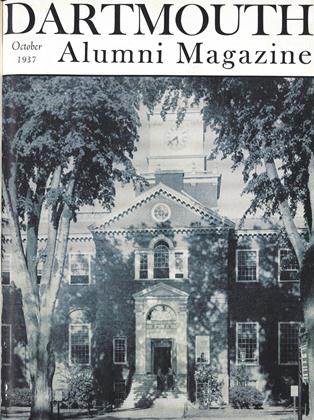by Lewis D. Stilwell, published as
Vol. V. No. 2, Proceedings of the Vermont Historical Society, Montpelier, 1937.
On any list of literature dealing with the history of New England Professor Lewis D. Stilwell's able paper, Migration from Vermont, must occupy a recognized position. Why is it that Portland, Oregon, is now said to be more Puritan than New England itself? Why is it that for a long time New England has had difficulty in persuading its abler sons and daughters to remain at home? Migration from Vermont serves both as an answer to these questions and as a lesson for younger and still growing sections of the United States.
Professor S til well has carefully traced population trends in Vermont for the period from the American Revolution to the Civil War. Thus the reader learns that from 1781 to 1810 Vermont's population increased by over six hundred per cent but that after 1810 the rate of increase declined until it reached the abnormal level of three-tenths of one per cent for the decade 1850 to iB6O. Indeed, in iB6O there were forty-two per cent of the natives of Vermont living in other states. What were the reaons for this amazing exodus? The reader discovers that because of a rapid and unplanned exploitation of its natural resources Vermont reached a premature peak of prosperity. Thereafter the climate and topography coupled with increasing competition from other states, lack of capital, and deficient transportation facilities caused economic stagnation. The religious fervor and high educational standards of the people unfitted them to endure static conditions. A famous son of Vermont, Horace Greeley, fittingly wrote, "Our farmers' sons escape from their fathers' calling whenever they can, because it is made a mindless, monotonous drudgery, instead of an ennobling, liberalizing, intellectual pursuit."
Of particular interest is the author's description of the evolution of transportation, from turnpikes and canals to the early railroads. Other arresting topics include the ever-recurring religious revivals, the sturdy efforts of the Vermonters to lift themselves out of economic depression, and their desire to be governed by the laws of God and Connecticut "until we have time to devise better." As a study of the commerce, industry and daily life of an interior New England section in the early 19th century, this paper is a welcome addition to the sparse existing authorities. The professional historian will find the author's technique correct and his industry great. Moreover, the author is able to deal with statistics without seeming to do so. The result is that the reader is not rebuffed by a technical discourse on Malthus' laws of population, but rather, enjoys a charming essay on the character of Vermont and its people
 View Full Issue
View Full Issue
More From This Issue
-
 Article
ArticleDartmouth Chapter of Phi Beta Kappa
October 1937 By LEON B. RICHARDSON '00 -
 Article
ArticleGradus Ad Parnassum
October 1937 By The Editor -
 Article
ArticlePresident Addresses College
October 1937 -
 Class Notes
Class NotesClass of 1921
October 1937 By Paul C. Belknap -
 Sports
SportsFollowing the Big Green Tearns
October 1937 By "Whitey" Fuller '37 -
 Class Notes
Class NotesClass of 1912
October 1937 By Conrad E. Snow
Richard F. Upton '35
Books
-
 Books
BooksSOVIET LEADERS & MASTERY OVER MAN.
February 1961 By ALLAN BALLARD -
 Books
BooksPENSION FUNDS: MEASURING INVESTMENT PERFORMANCE.
MARCH 1966 By J. PETER WILLIAMSON -
 Books
BooksDeviationist
JUNE 1966 By JOHN PARKE '39 -
 Books
BooksA Good Yarn
JANUARY/FEBRUARY 1985 By Mary B.Ross -
 Books
BooksEURIPIDES III.
By NORMAN A. DOENCES -
 Books
BooksTHOMAS CRAWFORD: AMERICAN SCULPTOR.
OCTOBER 1964 By WINSLOW B. EAVES



